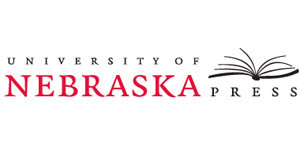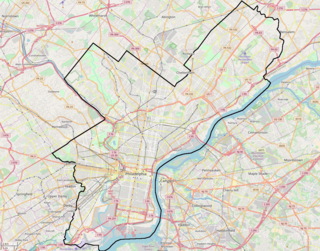Related Research Articles

Ohio is a state in the East North Central region of the Midwestern United States. Of the fifty states, it is the 34th-largest by area, the seventh-most populous, and the tenth-most densely populated. The state's capital and largest city is Columbus, with the Columbus metro area, Greater Cincinnati, and Greater Cleveland being the largest metropolitan areas. Ohio is bordered by Lake Erie to the north, Pennsylvania to the east, West Virginia to the southeast, Kentucky to the southwest, Indiana to the west, and Michigan to the northwest.

Turners are members of German-American gymnastic clubs called Turnverein. They promoted German culture, physical culture, liberal politics, and supported the Union war effort during the American Civil War. Turners, especially Francis Lieber, 1798–1872, were the leading sponsors of gymnastics as an American sport and the field of academic study.
Yiddish is a High German-derived language historically spoken by the Ashkenazi Jews. It originated during the 9th century in Central Europe, providing the nascent Ashkenazi community with a High German-based vernacular fused with elements taken from Hebrew and Aramaic, as well as - later on - Slavic languages, and traces of Romance languages. Yiddish writing uses the Hebrew alphabet. As of the 1990s, there were around 1.5–2 million speakers of Yiddish, mostly Hasidic and Haredi Jews.

An art museum is a building or space for the display of art, usually from the museum's own collection. It might be in public or private ownership and may be accessible to all or have restrictions in place. Although primarily concerned with visual art, art museums are often used as a venue for other cultural exchanges and artistic activities, such as performance arts, music concerts, or poetry readings. Art museums also frequently host themed temporary exhibitions, which often include items on loan from other collections.
There have been Jewish communities in the United States since colonial times. Early Jewish communities were primarily Sephardi, composed of immigrants from Brazil and merchants who settled in cities. Until the 1830s, the Jewish community of Charleston, South Carolina, was the largest in North America. In the late 1800s and the beginning of the 1900s, many Jewish immigrants left from various nations to enter the U.S. as part of the general rise of immigration movements. For example, many German Jews arrived in the middle of the 19th century, established clothing stores in towns across the country, formed Reform synagogues, and were active in banking in New York. Immigration of Eastern Yiddish-speaking Ashkenazi Jews, in 1880–1914, brought a large, poor, traditional element to New York City. They were Orthodox or Conservative in religion. They founded the Zionist movement in the United States, and were active supporters of the Socialist party and labor unions. Economically, they concentrated in the garment industry.

Frederick Jackson Turner was an American historian during the early 20th century, based at the University of Wisconsin until 1910, and then at Harvard. He was known primarily for his "Frontier Thesis". He trained many PhDs who became well-known historians. He promoted interdisciplinary and quantitative methods, often with an emphasis on the Midwest. His best known publication is his essay "The Significance of the Frontier in American History", the ideas of which formed the Frontier Thesis. He argued that the moving western frontier exerted a strong influence on American democracy and the American character from the colonial era until 1890. He is also known for his theories of geographical sectionalism. During recent years historians and academics have argued frequently over Turner's work; all agree that the Frontier Thesis has had an enormous effect on historical scholarship.

The University of Nebraska Press, also known as UNP, was founded in 1941 and is an academic publisher of scholarly and general-interest books. The press is under the auspices of the University of Nebraska–Lincoln, the main campus of the University of Nebraska system. UNP publishes primarily non-fiction books and academic journals, in both print and electronic editions. The press has particularly strong publishing programs in Native American studies, Western American history, sports, world and national affairs, and military history. The press has also been active in reprinting classic books from various genres, including science fiction and fantasy.

The Jewish Virtual Library is an online encyclopedia published by the American foreign policy analyst Mitchell Bard's non-profit organization American–Israeli Cooperative Enterprise (AICE). It is a website covering topics about Israel–United States relations, Jewish history, Israel, the Holocaust, antisemitism and Judaism.

Galician Jews or Galitzianers are a subdivision of the Ashkenazim geographically originating from Galicia, from contemporary western Ukraine and from south-eastern Poland. Galicia proper, which was inhabited by Ruthenians, Poles and Jews, became a royal province within Austria-Hungary after the Partitions of Poland in the late 18th century. Galician Jews primarily spoke Yiddish.

Simon J. Bronner is an American folklorist, ethnologist, historian, sociologist, educator, college dean, and author.

Holocaust survivors are people who survived the Holocaust, defined as the persecution and attempted annihilation of the Jews by Nazi Germany and its allies before and during World War II in Europe and North Africa. There is no universally accepted definition of the term and it has been applied variously to Jews who survived the war in German-occupied Europe or other Axis territories, as well as to those who fled to Allied and neutral countries before or during the war. In some cases, non-Jews who also experienced collective persecution under the Nazi regime are also considered Holocaust survivors and the definition has evolved over time.

The Center for Jewish History is a partnership of five Jewish history, scholarship, and art organizations in New York City: American Jewish Historical Society, American Sephardi Federation, Leo Baeck Institute New York, Yeshiva University Museum, and YIVO Institute for Jewish Research. Together, housed in one location, the partners have separate governing bodies and finances, but collocate resources. The partners' collections make up the biggest repository of Jewish history in the United States. The Center for Jewish History serves as a centralized place of scholarly research, events, exhibitions, and performances. Located within the Center are the Lillian Goldman Reading Room, Ackman & Ziff Family Genealogy Institute and a Collection Management & Conservation Wing. The Center for Jewish History is also an affiliate of the Smithsonian Institution.

The National Museum of American Jewish History (NMAJH) is a Smithsonian-affiliated museum at 101 South Independence Mall East at Market Street in Center City Philadelphia. It was founded in 1976.

Jews have inhabited the city of Galveston, Texas, for almost two centuries. The first known Jewish immigrant to the Galveston area was Jao de la Porta, who, along with his brother Morin, financed the first settlement by Europeans on Galveston Island in 1816. de la Porta was born in Portugal of Jewish parentage and later became a Jewish Texan trader. In 1818, Jean Laffite appointed de la Porta supercargo for the Karankawa Indian trade. When Laffite left Galveston Island in 1820, de la Porta became a full-time trader.

The Kansas Historical Society is the official state historical society of Kansas.
The Australian Jewish Genealogical Society (AJGS) is an Australian non-profit organisation established to encourage and assist those with Jewish ancestry to research their family histories. It is dedicated to the collection, preservation and dissemination of genealogical information of particular relevance and interest to members of the Australian Jewish community.

Fred Rosenbaum is an American author, historian and adult educator, specializing in the history of the Jewish community of the San Francisco Bay Area. Rosenbaum has been called a "superb storyteller". He is a founder and the director of Lehrhaus Judaica in Berkeley, California, described as "the largest Jewish adult education center in the western United States".

Ghettos were established by Nazi Germany in hundreds of locations across occupied Poland after the German invasion of Poland. Most ghettos were established between October 1939 and July 1942 in order to confine and segregate Poland's Jewish population of about 3.5 million for the purpose of persecution, terror, and exploitation. In smaller towns, ghettos often served as staging points for Jewish slave-labor and mass deportation actions, while in the urban centers they resembled walled-off prison-islands described by some historians as little more than instruments of "slow, passive murder", with dead bodies littering the streets.
The History of the American legal profession covers the work, training, and professional activities of lawyers from the colonial era to the present. Lawyers grew increasingly powerful in the colonial era as experts in the English common law, which was adopted by the colonies. By the 21st century, over one million practitioners in the United States held law degrees, and many others served the legal system as justices of the peace, paralegals, marshalls, and other aides.
References
- 1 2 "Jewish Museum of the American West – A Virtual Museum". Jewish Museum of the American West.
- ↑ "Jewish Museum of the American West". University of California, Davis Library.
A new, online museum, “the Jewish Museum of the American West will soon consist of Exhibition Halls for each of the regions, states and/or cities west of the Mississippi River that were considered a part of the American West.”
- ↑ Loiederman, Roberto (July 2, 2014). "Mining the 'Golden Age' of Los Angeles". The Jewish Journal .
| This museum-related article is a stub. You can help Wikipedia by expanding it. |
| This article related to Jewish history is a stub. You can help Wikipedia by expanding it. |